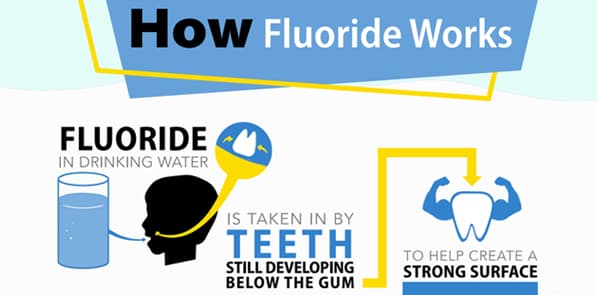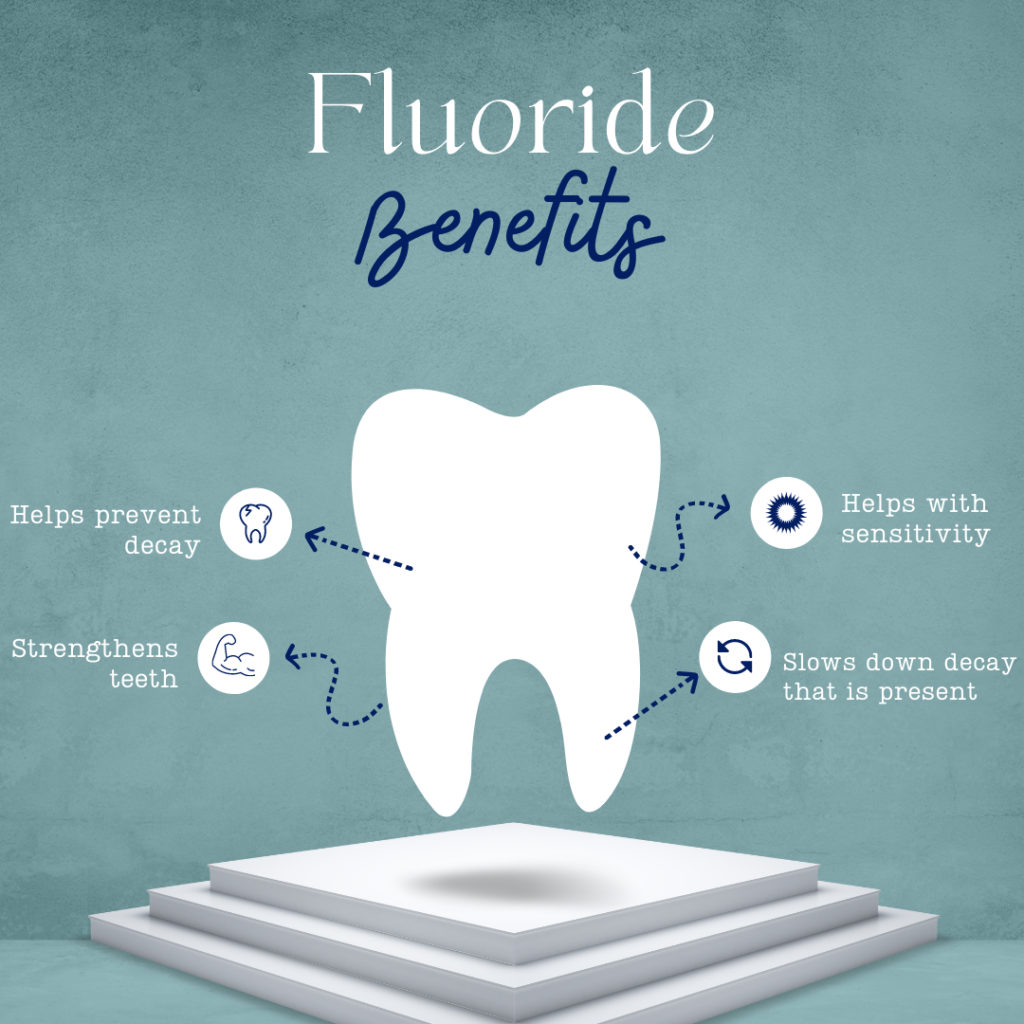Fluoride, a fluorine-containing compound, is extensively employed in oral care and drinking water to thwart tooth decay. By fortifying tooth enamel, fluoride acts as a deterrent to demineralization, diminishing the occurrence of cavities and even reversing the initial stages of decay.

Fluoride, a compound containing fluorine, is commonly included in drinking water and oral care products like toothpaste to thwart tooth decay. The use of fluoride in dental health has undergone extensive research and discussion. Its pivotal role in preventing tooth decay is evident in its impact on tooth enamel. The outer layer, enamel, is susceptible to decay from acid-producing bacteria. Fluoride enhances enamel strength through remineralization, reintroducing minerals and making it more resistant to acid attacks, thereby diminishing the risk of cavities.

Fluoride plays a crucial role in dental health by impeding the demineralization process, where acid produced by bacteria causes mineral loss from enamel. Through enhancing remineralization and reducing demineralization, fluoride not only prevents the progression of tooth decay but can also reverse its early stages.
Many communities opt for water fluoridation to establish an optimal fluoride level for dental health. This cost-effective practice ensures a consistent and controlled fluoride concentration in the water supply, benefiting the entire population irrespective of age, socioeconomic status, or access to dental care.
Beyond water consumption, fluoride is directly applied to teeth through dental products like toothpaste, mouthwash, and professional treatments. Topical application ensures direct contact with the tooth surface, maximizing fluoride’s benefits for enamel protection. Additionally, fluoride contributes to reducing tooth sensitivity by strengthening enamel and minimizing exposure of the underlying dentin, which is more sensitive to external stimuli.
While fluoride is beneficial for dental health, maintaining a balanced intake is crucial. Municipal water sources typically regulate fluoride levels, but in cases of non-municipal sources or elevated fluoride levels, achieving balance is essential. Whole-house filtration systems with reverse osmosis technology effectively reduce fluoride in drinking water, ensuring optimal consumption for overall health.
It’s worth noting that excessive fluoride intake, particularly during childhood tooth development, can lead to dental fluorosis—a cosmetic issue altering enamel appearance. Regulatory agencies set standards for fluoride levels in water and oral care products to ensure safety.
In summary, fluoride in drinking water positively influences dental health, preventing tooth decay through various mechanisms. Achieving a balanced fluoride intake is vital for optimal health, and the use of water filtration systems provides a tailored approach to manage fluoride levels effectively.
Strengthens Tooth Enamel
Fluoride becomes integrated into the tooth enamel’s structure, rendering it more resistant to acid attacks from oral bacteria—a process known as remineralization. By fortifying the enamel, fluoride plays a crucial role in averting the demineralization of tooth surfaces, thereby diminishing the risk of cavities.
Prevents Tooth Decay
A primary advantage of fluoride in drinking water lies in its capacity to prevent tooth decay. When individuals consume water with optimal fluoride levels, fluoride ions become integral to the tooth structure, bolstering the enamel’s resistance to acidic conditions that may precipitate decay. This proves especially pivotal in cavity prevention for both children and adults.
Community Water Fluoridation
Community water fluoridation stands as a public health initiative involving the adjustment of fluoride concentration in the community water supply to an optimal level for dental health. Supported by esteemed organizations such as the Centers for Disease Control and Prevention (CDC), the World Health Organization (WHO), and the American Dental Association (ADA), this practice provides a systemic and equitable means of delivering fluoride to a broad population, irrespective of age, socioeconomic status, or access to dental care.
Reduces Oral Health Disparities
Community water fluoridation assumes particular significance in mitigating oral health disparities. It ensures that individuals in communities with limited access to dental care or resources still benefit from fluoride, thereby contributing to an overall improvement in oral health.
Safe and Effective
When implemented at recommended levels, fluoride in drinking water is deemed both safe and effective in preventing tooth decay. Regulatory bodies such as the U.S. Environmental Protection Agency (EPA) establish standards to ensure that fluoride levels in drinking water remain within safe limits.

Prudently managing fluoride levels in your home’s drinking water is a proactive measure for maintaining optimal dental health and addressing potential concerns related to overexposure. While fluoride is advantageous in preventing tooth decay, those residing in regions with naturally elevated fluoride levels may seek control over their intake. Home water filters, particularly those incorporating reverse osmosis (RO) technology, serve as effective tools for regulating and managing fluoride levels.
A diverse array of home water filters exists, each with unique capabilities. If your goal is to decrease fluoride levels, explore filtration systems featuring reverse osmosis (RO) technology. Renowned for their effectiveness in eliminating impurities, including fluoride, RO systems offer heightened control over the fluoride content in your drinking water.
Selecting the ideal home water filter requires careful consideration of factors to ensure it caters to your specific needs and efficiently tackles contaminants in your water. Follow these essential steps for guidance:
Conduct a Water Quality Test: Identify contaminants in your water through a comprehensive water quality test. This information is pivotal for choosing a filter that can effectively eliminate or reduce specific impurities, including common ones like chlorine, lead, bacteria, sediment, and, in some instances, fluoride.
Understand Filtration Technologies: Acquaint yourself with diverse filtration technologies, such as activated carbon filters, reverse osmosis systems, ultraviolet (UV) purifiers, and distillation units. Each technology boasts distinct strengths and weaknesses. Opt for the one aligning with the contaminants you aim to address, ensuring a tailored approach to your water filtration needs.
Across numerous decades, municipalities have diligently treated water to bolster public health. This article delves into the imperative of comprehending potential fluoride-related risks in water, shedding light on this vital aspect. Furthermore, our goal is to elucidate the concept of fluoridation, contributing to a more thorough understanding of water treatment processes.
While the indisputably positive impact of fluoride in drinking water persists, maintaining a meticulous balance is paramount to alleviate potential dental health issues. At this juncture, water filters emerge as pivotal custodians of this equilibrium.
Integrating a water treatment fluoride system not only enables you to leverage the advantages of this mineral but also empowers you to regulate its concentration optimally. Contemplate investing in a comprehensive water filtration system for your entire residence today to proactively safeguard your family’s health and well-being. It represents a proactive measure toward relishing the benefits of fluoride in water while ensuring a deliberate and balanced approach to dental health.




